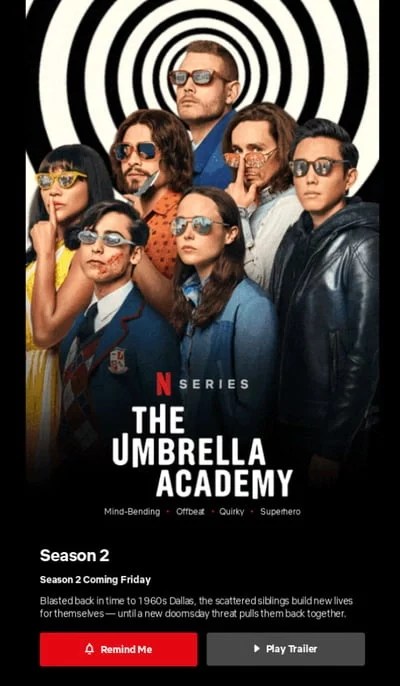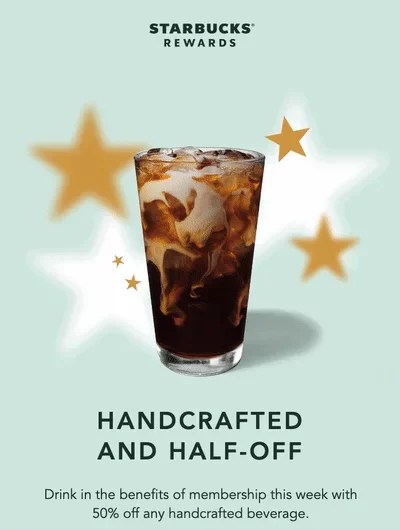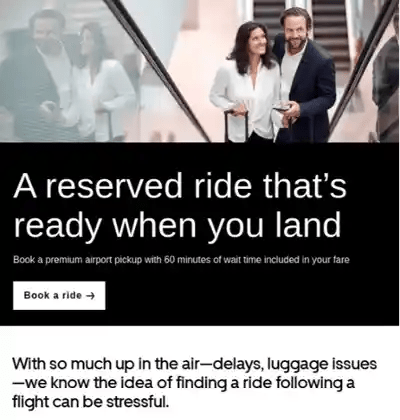|
Getting your Trinity Audio player ready...
|
Email marketing has become one of the most common tools used by businesses today. It allows marketers to send effective email campaigns directly to their customers’ inboxes while providing insights on how successful these campaigns are.
With so many emails being sent out, it can be difficult to decide which ones should be used for your campaigns. That’s why I have compiled a list of the best email marketing examples, so you can get inspired and have everything you need in one place.
The list includes both B2C and B2B campaigns, so regardless of which audience your brand speaks to, you will be able to pick up some tips and tricks that will allow you to craft effective emails that are sure to make an impact on your target customers.
This comprehensive list looks at how different companies structure their emails, the content they feature as well as the colors and visuals used – all of which influence whether or not users will open and interact with them.
What is an Email Marketing Campaign?
Email campaigns are a great way for businesses to reach out to their current and potential customers. Through email, businesses can stay top-of-mind with the people who may eventually turn into paying customers. Email is an especially beneficial channel for inbound marketing because it allows you to deliver individualized messages in a format that everyone understands and is familiar with.
An email marketing campaign typically consists of multiple emails sent in a sequence, each targeting a specific call-to-action like getting users to sign up, book a call, continue reading, or add to their cart. Good email campaigns will have both short-term goals such as clickthroughs or sales conversions but also be part of an overall strategy designed for long-term growth and increased brand loyalty.
This means providing useful content like blog posts or white papers instead of just outright product pitches. With the right techniques and strategies, your email marketing campaigns can be effective at generating leads, boosting user engagement, and driving up revenue.
The Role of Effective Email Marketing Campaigns
An effective email marketing campaign works to deliver the desired outcome. Whether this is generating leads, building relationships with existing customers, or promoting a new product line, it’s important to ensure the desired action is taken from the recipient.
To do this, you must create a compelling story that resonates with your target audience. This means crafting content that speaks to their wants and needs to drive them to take the actions that are important to them.
You can accomplish this by leveraging various marketing tactics such as using segmentation and personalization in your emails, collecting customer behavior data so you can provide relevant content, ensuring mobile-friendly emails are periodically sent out, and/or taking advantage of automation for more significant results. Analyzing campaigns against certain metrics will help you evaluate results and tweak campaigns as needed for future success.
For example, setting the goal of an email campaign might be to promote a new product launch. This would mean developing creative strategies around announcing the release date or writing about the benefits of the product itself – all while keeping in mind how effectively these messages will work when landing in recipients’ inboxes.
Through careful content planning and spreadsheet organization along with proper testing before its release, an email marketing campaign can be successful at achieving the desired goals.
Now that you understand what email campaigns are and why they’re important, let’s look at some of the best email marketing campaign examples around.
1. Traffic Generation Email Marketing Campaigns
Email marketing is one of the most effective ways to drive web traffic and increase conversions. It can help you get visitors who have already shown an interest in your business, making them more likely to act once they arrive on your site.
According to HubSpot, 45.2% of marketers reported that generating more web traffic was one of their top objectives when running an email campaign. Email is an ideal way to promote high-value content such as blog posts, product pages, and other website resources. With the right approach, you can send click-throughs directly to pages on your site and generate qualified leads for your business.
In addition, with the help of advanced features such as split testing, segmentation tracking, automated workflows, and personalized content campaigns – you can target visitors at different stages of the customer journey.
By carefully crafting campaigns tailored to each audience based on their past interactions with your brand, it’s easier than ever to build relationships and establish yourself in the online landscape while driving targeted traffic to your desired web pages.
All in all, while most digital marketers rely on social media channels for promotion purposes due to their huge reach potential; email remains a primary tool for driving web traffic which would be beneficial in the long run.
2. Awareness Email Marketing Campaigns
Email marketing is an effective way to nurture leads and grow brand awareness. By providing helpful educational content as part of your campaigns, you can stay top of mind with potential customers without having to pressure them into purchasing. According to marketers surveyed in a recent study, 43.9% listed increasing brand awareness as one of the primary objectives of their email strategy.
Consistently engaging prospects with informative emails can help position your brand as an industry leader while making it easier to acquire new customers. Email is also a great way to ensure that consumers hear more from you than they do from your competitors, giving them more chances to familiarize themselves with your company’s offerings before making a final decision. Awareness email campaigns are proven to have a significant impact on long-term customer retention and loyalty.
3. Lead Nurturing Email Marketing Campaigns
Lead nurturing email marketing campaigns are designed to stay top of mind with potential customers, targeting those who have strong purchase intent. In these emails, you can be direct with your call-to-action and ask recipients to buy or add items to their cart.
That said, the recipient needs to have expressed an interest in them. Use your ecommerce tool, CRM, or CMS to find out more information about the recipient’s purchasing habits and behaviors. With those insights in hand, you can craft emails that appeal specifically to their needs and that are more likely to encourage an action from them.
To make the most of lead-nurturing email campaigns, it is key that you provide content that focuses on conversions. Keep track of chained emails sent out along with any feedback from customers; this should give you a better idea of what actions people are taking after receiving these messages.
By creating personalized experiences tailored towards each individual’s needs and preferences, you can increase the likelihood of conversion as well as brand loyalty further down the line.
4. Revenue Generation Email Marketing Campaigns
Email marketing campaigns offer a great way to generate revenue by encouraging customers to upsell or cross-sell services as well as addressing potential buyers who might be close to making a purchase. By sending targeted campaigns, businesses can remind users of their presence and keep them actively engaged with their products.
This concept of “abandon cart” campaigns has been used by many successful companies to recover lost sales, as well as running promotions such as flash sales that potentially lead to customers upgrading their subscriptions.
Efficient email marketing campaigns can also benefit marketers looking to increase their revenue. According to our survey, 57.8% of marketers have identified increasing profits as one of the main objectives of their email strategies.
The importance of these campaigns cannot be underestimated and they should be carefully managed for them to produce positive results for businesses, both in terms of bringing in more money and building relationships with customers.
What are The Best Email Marketing Campaign Examples?
Here are some of the most inspiring email marketing campaign examples:
1. AutoTrader
AutoTrader has recently launched a new email marketing campaign to keep their customers informed about changes. This campaign allows customers to modify their preferences for future emails which ensures that users only receive the notifications they want.
Customers can now choose between different categories such as special offers, events, and tips & advice to customize what emails they receive. This feature is incredibly useful for customers because it eliminates the hassle of having to unsubscribe from emails they no longer want or need.

AutoTrader’s ongoing dedication to understanding customer preferences makes it one of the most valued car sites on the web. By providing advanced customization options, this pioneering brand continues to put consumer choice in the spotlight.
Not only does this help AutoTrader create an optimal user experience but it also gives consumers more control over what information they do and don’t wish to receive from the company itself. This also helps them clean up their email list. It paradoxically leads to them receiving more valuable emails; those more tailored to their interests–all while preserving autonomy over their inboxes.
2. Netflix
In today’s world of technology driven by streaming platforms, engagement is key to getting noticed. Netflix has started engaging their customers with personalized emails based on their watch history that curates new and upcoming shows the customer may be interested in.
Such messages have plenty of visuals supporting them, making them skimmable for easy understanding so that customers are engaged at a glance. The email also uses Netflix’s signature black-and-red design to make sure the recipient is comfortable since they’re used to experiencing those colors with Netflix. This reinforces brand identity and creates an established connection between the consumer and the company.

This effort also strengthens customer loyalty as well as keeps audiences constantly engaged. This therefore reusults in driving consumption and user retention within the brand’s network of services. Keeping branding consistent across all messaging channels is an effective way of attracting consumers and can help turn them into lifelong fans who stay loyal to the product or service.
Netflix does an excellent job of utilizing this strategy by presenting customers with a familiar interface even when interacting with emails from them, adding a personal touch to engage users through personalization efforts made by the platform.
3. Starbucks
Starbucks has created an eye-catching marketing campaign to promote their brand and entice customers. The email starts off with a playful animation that quickly catches the viewer’s attention and creates curiosity. This simple, yet effective, strategy allows the email to stand out from the myriad of other emails vying for attention in recipients’ inboxes.
Additionally, Starbucks strategically frames this promotion as a member-exclusive benefit. By positioning this promotion as an exclusive membership perk, customers are encouraged to join the Starbucks Rewards program to access more unique offerings and become a part of the community.

Ultimately, by designing clever animation in combination with benefits around exclusivity, the campaign helps capture people’s imaginations while drawing them into a deeper relationship with Starbucks.
4. Venmo
The goal of Venmo’s re-engagement campaign is to get former users to give the app another chance. Through a friendly and informative email, the company highlights its most recent changes and benefits.
The concise copy highlights the advantages that a returning user may not be aware of since the last time they used Venmo. It also serves as an invitation for them to try out the app again and see all the new features and offers now available.
By discussing all of these points in a brief but persuasive way, Venmo has come up with an effective marketing campaign that can help bring back inactive customers. Through this re-engagement effort, they can effectively capture more business and potentially make more sales.

Not only does it increase the possibility of getting new customers, it also helps strengthen relationships with existing ones by focusing on their evolving needs—such as making payments easier and faster than ever before.
5. Litmus
Litmus is a great example of animation being used to create a more interesting email marketing design. The approach employed here encourages recipients to take a deeper dive into the content by having them swipe through each aspect of the email, giving them information about their email tools that they may not have previously known.
The header does an excellent job of outwardly displaying what the email is actually about, making it easy for those receiving the message to understand its purpose without having to read through extensive text.

The inclusion of animation in the email also makes it more engaging and appealing for users as they gain more valuable insights from within a single animation graphic than just readily available text.
Litmus is providing users with more chances to explore and learn at their own pace in an enjoyable way. The campaign seeks to break away from traditional static emails and promote something new and exciting.
6. Loft
The customer-focused email from Loft is an effective way of showcasing their respect for customers’ inboxes. This type of email encourages customers to update their preferences in order to ensure that they receive emails that are more personalized and interesting to them.
The message goes beyond simple content marketing and has the goal of attaining a level of customer loyalty that is based on genuine understanding and care for the recipient’s needs.
In order to achieve this, Loft asks recipients to update their email preferences while also emphasizing their commitment to providing quality content that matches a specific person’s interests. By taking these additional steps, Loft builds consumer trust by declaring that they put the customer first before launching any campaigns.

It also shows consumers how much effort is being put into creating something special for them, rather than just blindly sending out frequent newsletters or promotional offers. In short, Loft’s email preference campaign creates a space where customers know they will be respected and cared about.
7. UncommonGoods
Creating a sense of urgency in a marketing campaign is essential for boosting conversions and achieving success. By focusing on the value of acting now, UncommonGoods successfully manages to create anticipation and motivate prospects to take action.
The email emphasizes the importance of acting immediately before they regret not doing so, emphasizing their unique offer and the limited timeframe that it’s available. This creates an urgency for people to take advantage of the discount by urging them to act before it’s too late therefore generating more conversions for UncommonGoods.

UncommonGoods also makes clever use of language to entice customers by communicating that waiting will only work in favor of their competitors. They remind customers of what they will miss out on if they don’t take action now – prompting more leads to convert into paying customers in no time.
Through this marketing technique, UncommonGoods demonstrates how powerful words can be when creating campaigns with a sense of urgency. To complete their message, the company includes a call-to-action button that reminds users how important it is for them to act now – indicating their key message at a glance without any additional effort from customers.
8. Uber
Uber’s marketing emails exemplify effective simplicity and effective engagement. The emails are concise, yet detailed enough to give customers the necessary information that entices them to take action.
Uber capitalizes on this simplicity by crafting an initial description of their offers followed by an actionable call-to-action (CTA) encouraging people to book an airport ride in advance. This combination of brevity and clarity ensures subscribers won’t miss the main message while skimming through the email.

The aesthetics of Uber’s emails also coordinate well with its brand identity. They feature a black-and-white color palette as well as custom fonts to ensure readers associate Uber communications with the company’s overall identity. Whether through its website, app, or its marketing emails, the company consistently presents itself in an aesthetically pleasing manner that effectively carries across its visual messaging no matter how customers choose to interact with Uber.
9. Dropbox
A well-crafted re-engagement campaign is an effective way to win back former customers and keep them in your marketing funnel. Dropbox’s “Try out one of our products!” email does just that, utilizing professional language, a clear call to action, and helpful content links.

That content links directly to Dropbox’s template libraries which can be immensely useful for the recipient. The short length of the email also helps emphasize the company’s main message that they aren’t here to intrude, rather they just want to remind the customer of what their amazing product Paper has to offer. To further entice inactive users to give your product another try you could include incentives like discounts or free trial periods that may bring them back into the fold.







